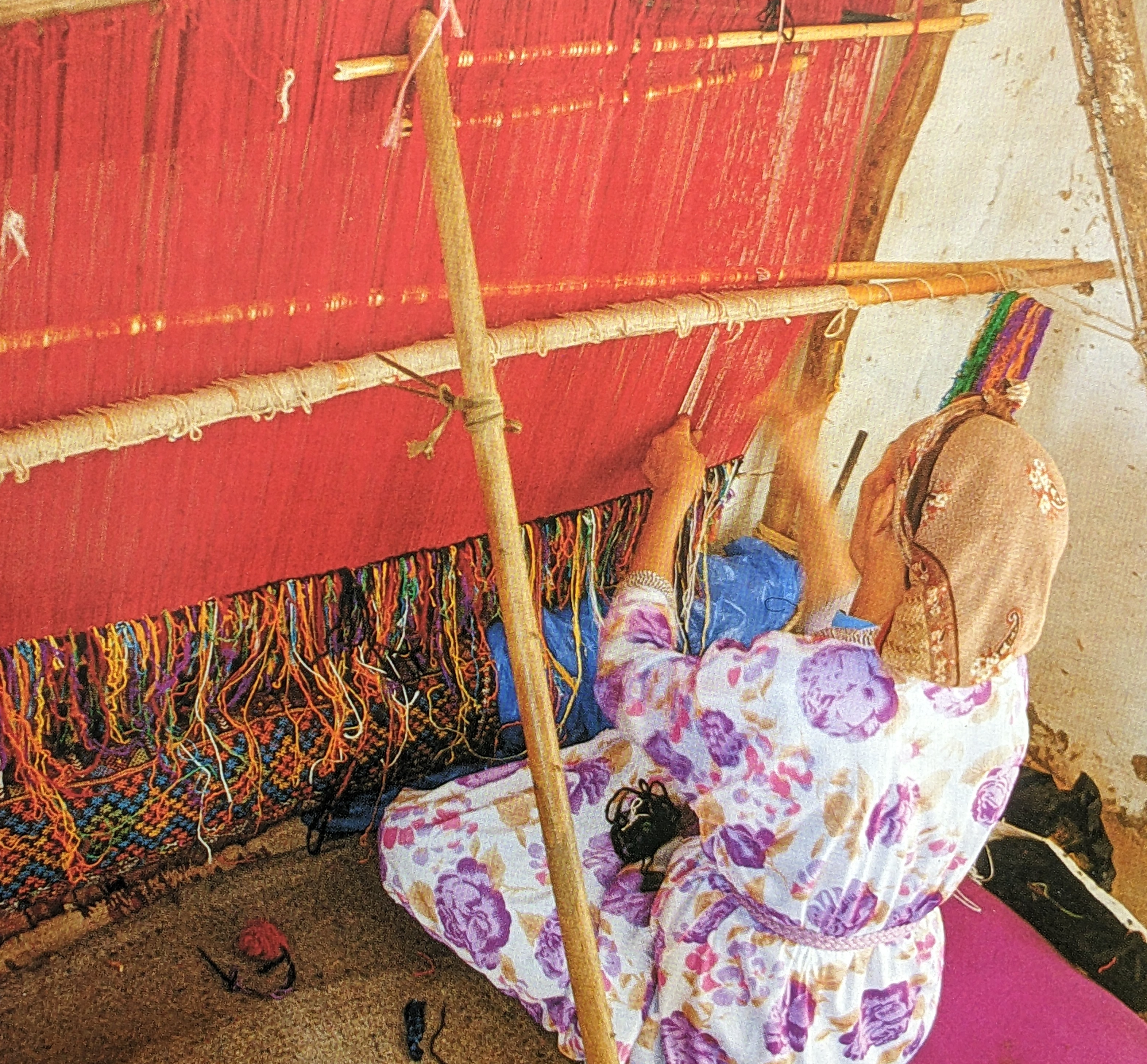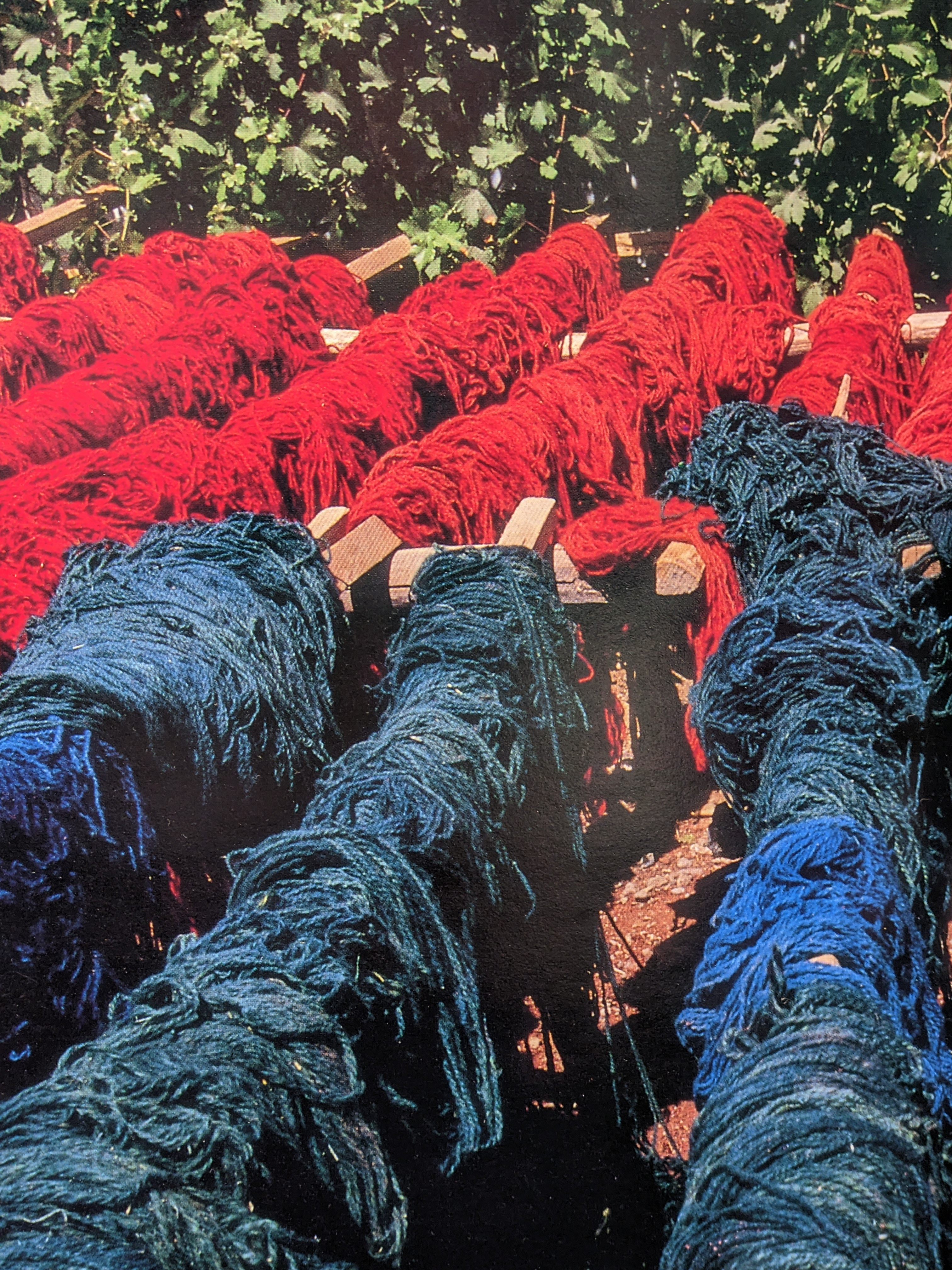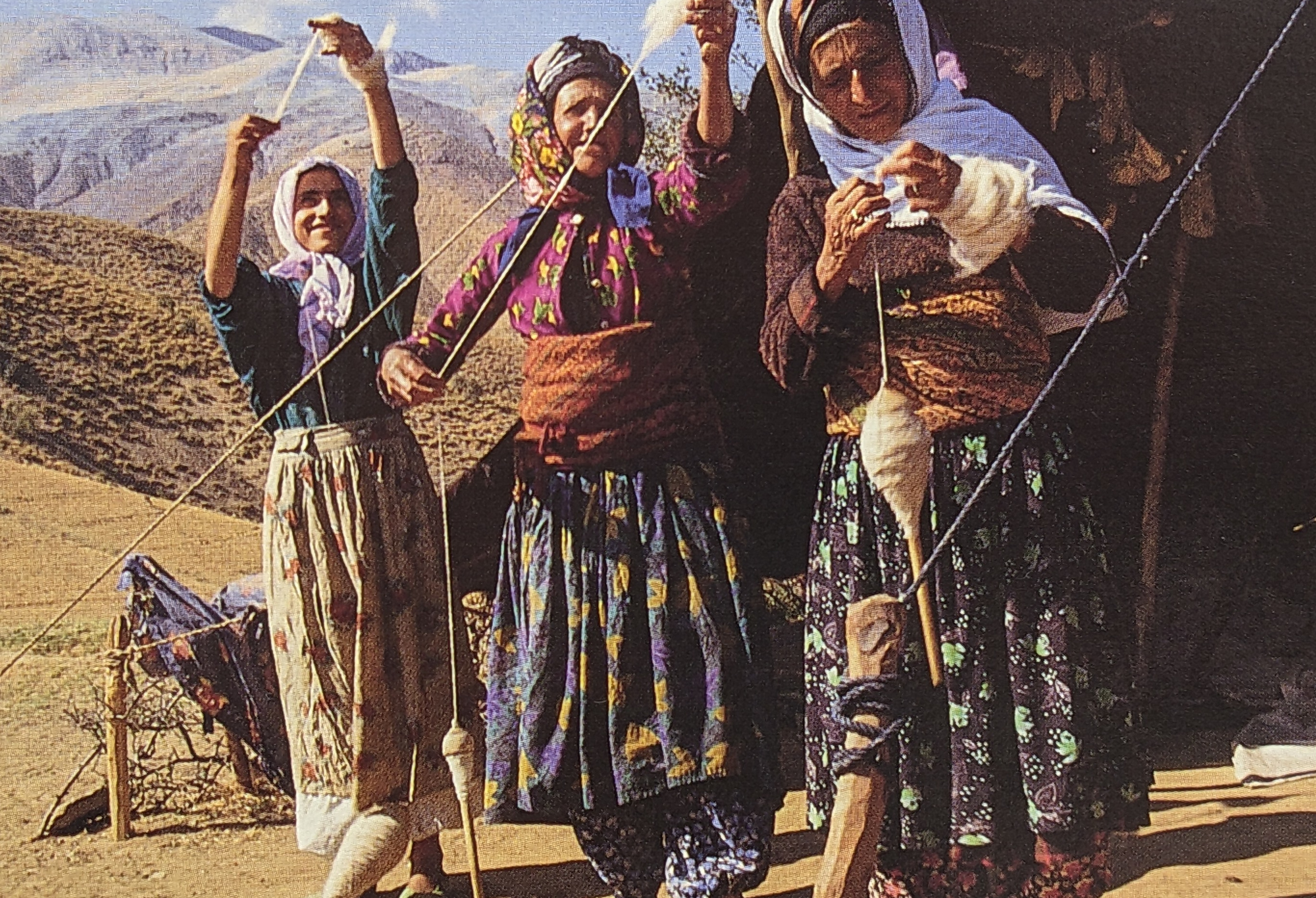 Our store inventory has great emphasis on village made rugs. These rugs have particular character reflective of the individual weaver. We like to think of the weaver not only as an artisan but as an artist, lending their unique expression to a particular rug they are weaving. Village rugs are woven in a cottage industry fashion (not in factories or elaborate workshops). Within the village, all elements needed to make a rug can usually be found. Sheep supply the wool for the village spinners, dyers are available to dye the wool with natural pigments found in the area. Designers would be making graphs for loose design for the weaving. The finished wool and design then go to the weavers who usually have a loom at the home for weaving. Finishing the rug is done by younger men in the village. Finishing includes shearing, washing, and stretching. This way of crafting a rug takes a group effort. Most of our rugs are still crafted in this cottage tradition, however, in some cases, travel is involved. For example, some of our rugs are woven by hand in Afghanistan but the finishing may take place in Pakistan for a variety of reasons such as washing and drying in the winter months, and access to a port for shipping.
Our store inventory has great emphasis on village made rugs. These rugs have particular character reflective of the individual weaver. We like to think of the weaver not only as an artisan but as an artist, lending their unique expression to a particular rug they are weaving. Village rugs are woven in a cottage industry fashion (not in factories or elaborate workshops). Within the village, all elements needed to make a rug can usually be found. Sheep supply the wool for the village spinners, dyers are available to dye the wool with natural pigments found in the area. Designers would be making graphs for loose design for the weaving. The finished wool and design then go to the weavers who usually have a loom at the home for weaving. Finishing the rug is done by younger men in the village. Finishing includes shearing, washing, and stretching. This way of crafting a rug takes a group effort. Most of our rugs are still crafted in this cottage tradition, however, in some cases, travel is involved. For example, some of our rugs are woven by hand in Afghanistan but the finishing may take place in Pakistan for a variety of reasons such as washing and drying in the winter months, and access to a port for shipping.
This rich legacy of craftsmanship in rug weaving is perhaps coming to a slow end as many younger generations, regardless of the country are just not interested in weaving. There are few younger weavers to replace the retiring rug makers. Even with many talented weavers still in places like Afghanistan, the political and social landscape is not stable and therefore makes the future of the craft hard to predict.
Natural vs. Synthetic Dyes
 Dyes made from natural substances such as roots have been used in Oriental rugs for thousands of years. At the end of the 19th century poor quality but easy to use aniline (synthetic) dyes had been discovered. 1940 found these inferior aniline dyes had essentially taken the place of natural dyes in carpet production. Even the recipes for making natural dyes had been entirely lost or forgotten.
Dyes made from natural substances such as roots have been used in Oriental rugs for thousands of years. At the end of the 19th century poor quality but easy to use aniline (synthetic) dyes had been discovered. 1940 found these inferior aniline dyes had essentially taken the place of natural dyes in carpet production. Even the recipes for making natural dyes had been entirely lost or forgotten.
In the early1980s, natural dyes began to be re-discovered (and in some cases “reverse-engineered”) and used in a few rugs. It was the beginning of a renaissance in village made rugs. At the same time, the newer generation of synthetic “chrome” dyes were perfected. These dyes do not fade prematurely in the sun nor do they run when washed with water. Often today’s better quality “chrome” or “chromium” synthetic dyes are difficult to distinguish from natural dyes by the naked eye. Natural and synthetic chrome dyes are used today in Oriental rugs and both are excellent.
In the opinion of many, good quality vegetal dyes offer a richer and more variegated palate of color (“Abrash”). Carpets dyed with natural dyes age with a warm pleasing patina. Additionally, natural dyes are more environmentally friendly. Vegetal dyes are more labor intensive and require a large amount of dye material. Consequently, naturally dyed carpets are more expensive and may add a premium to the cost of those rugs over synthetically dyed carpets. Some customers prefer the more uniform color characteristic derived from synthetic dyes. Personally I favor the simplistic beauty of natural dyes. When choosing a carpet, the choice between natural and synthetic dyes is a matter of preference and perhaps, cost.
Machine Spun vs Hand Spun Wools
 Pre industrial age, weavers spun wool by hand to create yarn that makes up the pile of Oriental rugs. Industrialization meant that by 1940 nearly all wool used in carpets was spun by machines. In the renaissance of traditional techniques begun in 1980, a small but appreciable number of weavers are again spinning wool by hand. Although some people prefer the uniformity and formal appearance that machine spun wool imparts to carpets, most connoisseurs value the effect produced by hand spun wool. When spun by hand, yarn absorbs more dye where it is loosely spun and less dye where it is spun tightly, producing variegation ( “Abrash“) in the colors of a rug. Hand spun wool does indeed require more labor and therefore, rugs woven with hand spun wools are more costly. The hand spinning process is less abrasive to the wool; more of the natural oils (lanolin) are retained and less fibers are broken. The end result of this process produces a wool that is more resilient and carpets made with such wool lasts long and wears generally much better. As a matter of personal taste some people prefer the uniformity and formal appearance that machine spun wool imparts to carpets, however, most connoisseurs value the effect produced by hand spun wool.
Pre industrial age, weavers spun wool by hand to create yarn that makes up the pile of Oriental rugs. Industrialization meant that by 1940 nearly all wool used in carpets was spun by machines. In the renaissance of traditional techniques begun in 1980, a small but appreciable number of weavers are again spinning wool by hand. Although some people prefer the uniformity and formal appearance that machine spun wool imparts to carpets, most connoisseurs value the effect produced by hand spun wool. When spun by hand, yarn absorbs more dye where it is loosely spun and less dye where it is spun tightly, producing variegation ( “Abrash“) in the colors of a rug. Hand spun wool does indeed require more labor and therefore, rugs woven with hand spun wools are more costly. The hand spinning process is less abrasive to the wool; more of the natural oils (lanolin) are retained and less fibers are broken. The end result of this process produces a wool that is more resilient and carpets made with such wool lasts long and wears generally much better. As a matter of personal taste some people prefer the uniformity and formal appearance that machine spun wool imparts to carpets, however, most connoisseurs value the effect produced by hand spun wool.



